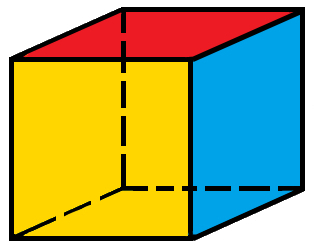
The starting point
People do not only communicate using words. They communicate through their overall behaviour. Different people behave differently following their personal patterns.
One person interprets the behaviour of another person according to his or her own patterns, and, therefore, can understand that other person only to a limited extent.
If I want to communicate with other people more successfully, it is worth knowing more about my own behaviour and the behaviour of others.
The 3D Behaviour Method enables pragmatic and professional access to this knowledge. It does not involve complex psychological analyses, because only signals and behaviour are analysed and conclusions about character or personality do not need to be drawn.
The method
The method uses commonly known analogies such as Aristotle’s three ways to persuade (ethos, pathos, logos), or Pestalozzi’s three pedagogical learning maxims (head, heart, hand), but also the three primary colours red, blue, and yellow.
The method has been co-developed by Dan Wiener, in the Kissling Institute’s network since 2002 and in the 3DC Academy between 2015 and 2019.
Since 2020, communication & culture is offering its own continued development of the method as “3D Behaviour”.
The method distinguishes between three behaviour types:

Red behaviour
Blue Behaviour
Yellow Behaviour
Most importantly, the system is non-judgemental. None of the three behaviour types is better or worse than the others. They are different styles of behaviour and communication.
Characteristics of the three behaviour styles
| Red | Blue | Yellow | |
| How? | Dynamic Direct | Analytical Clear | Friendly Relativising |
| What? | Status Strength Agility | Agenda Organisation Efficiency | Trust Connection Adaptability |
| Focus on | People | Subject | Relationship |



| Red | Blue | Yellow | |
| pos | Strong Inspiring | Dependable Relevant | Affable Inclusive |
| DYNAMIC | STRATEGIC | DIPLOMATIC | |
| neg | Inconsiderate Narcissistic | Fussy Impersonal | Cumbersome Opportunistic |
| TYRANNIC | PEDANTIC | BACK-STABBING |



Important rules of the 3D Behaviour Method
1. The system is not judgemental. None of the three behaviours is better or worse than the others. They are different styles of behaviour and communication.
2. All people are capable of all the behaviour options, but they choose their personal style based on their personal pattern.
3. As the system is non-judgemental, it is permitted (and sensible) to analyse the behaviour of the other person and react to it.
4. If I have a little more time, I can notice that the other person maintains a particular style, combining one, two, or three behaviour styles, and rarely changes this style in his or her life. (The same applies to ourselves, of course.)
5. It is possible to develop the personal style on the positive side of the 3D Behaviour Method.
6. It is possible “to learn foreign languages”, i.e. practicing and learning my weaker styles.
The method enables me to respond to people and situations better, to understand others better, and to make myself and my ideas more intelligible.
Behaviour imprinting
Tests based on the method have shown that in any group there is equally as much red, blue, and yellow imprinting on average.
We do not need to answer the question of how this personal imprinting comes about. For our purposes, it suffices to observe the visible behaviour (for example, the communication signals). As mentioned before, the method does not require any conclusions about character or personality.
Personal style usually changes a person only slightly. However, he or she is able to adapt in different situations (for example, the professional environment) and culturally (self-chosen and existing references) to a certain extent.
Inversely, there is a cultural expectation of the person’s behaviour: In a competitive environment, red behaviour has more weight. Yellow behaviour is more prominent in a more collegial environment and blue in a technical environment. From the outside, these groups are perceived more red, blue, or yellow in terms of their behaviour. However, an equal number of red, blue, and yellow behaviour styles is perceived within these groups.
Examples of Use
The 3D Behaviour Method can be applied to all areas of communication. For example:
| General | How can I positively develop my personal style? How can I develop and practice the styles less familiar to me (“foreign languages”), and purposefully apply them? |
| Presentations | How do I address my audience three-dimensionally in three colours? How do I meet the different expectations? How can I plan and steer my behaviour accordingly? |
| Conversations | What is a blue conversation like? How about a red or a yellow one? |
| Negotiations and Sales | Along with the content of the negotiation, it is decisive whether I negotiate in a colour that is appropriate for my counterpart to enable a solution. Or, conversely, I intentionally set a counterpoint to make the negotiation more difficult. |
| Conflicts | Similar to negotiations, there is a personal level to many conflicts. I can have a deescalating effect on this level through a positive consideration of the personal style. |
| Team / Working Style | There are different working styles in every team due to personal style and also expectations of others’ behaviour. If the team members are aware of this, they can handle the differences in a more productive way. |
| Leadership | The leadership style has an enormous effect on the culture that is nurtured and on how well the team works. Motivation in red, blue, and yellow is fundamentally different. Leaders can benefit a great deal from 3D Behaviour know-how. |
